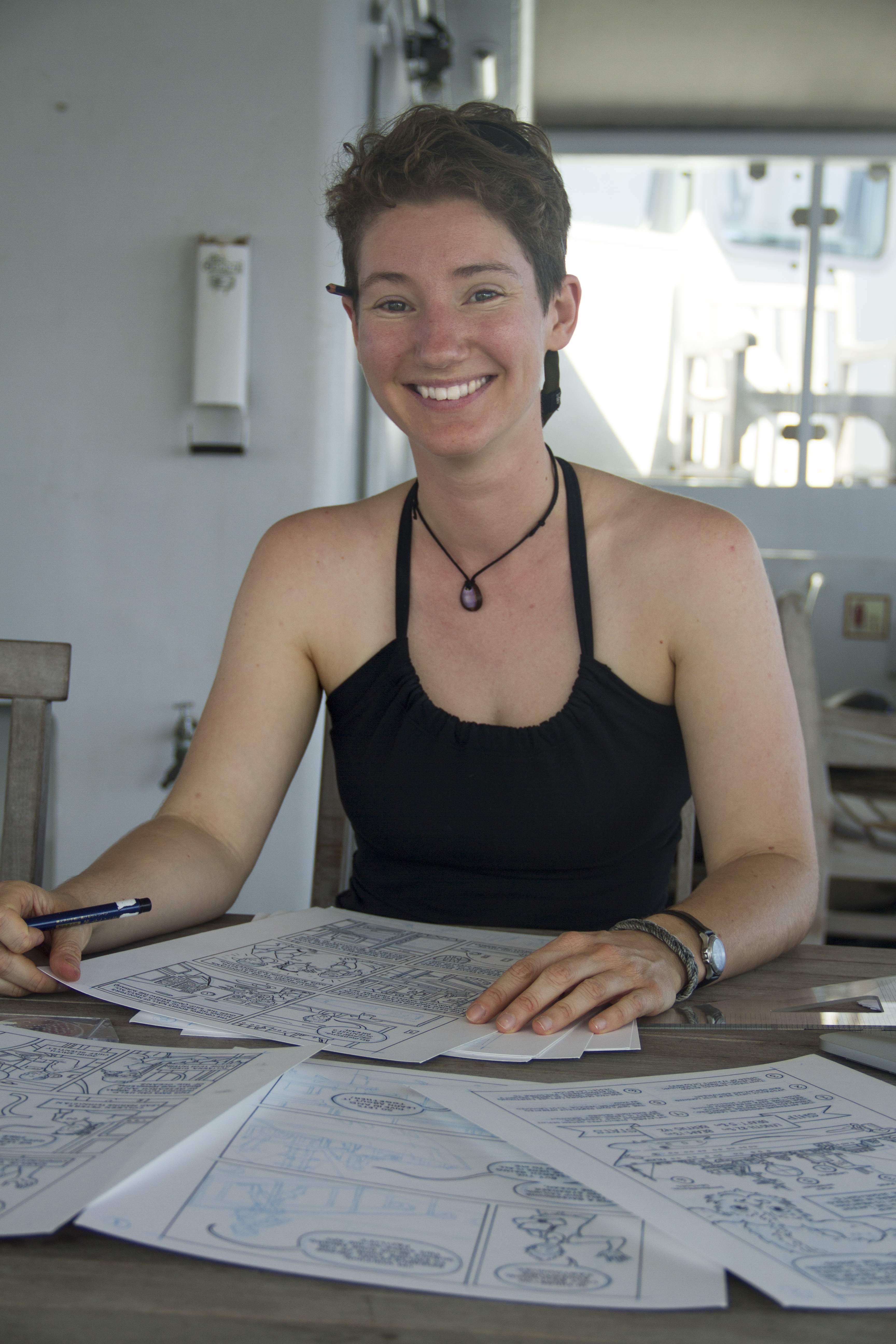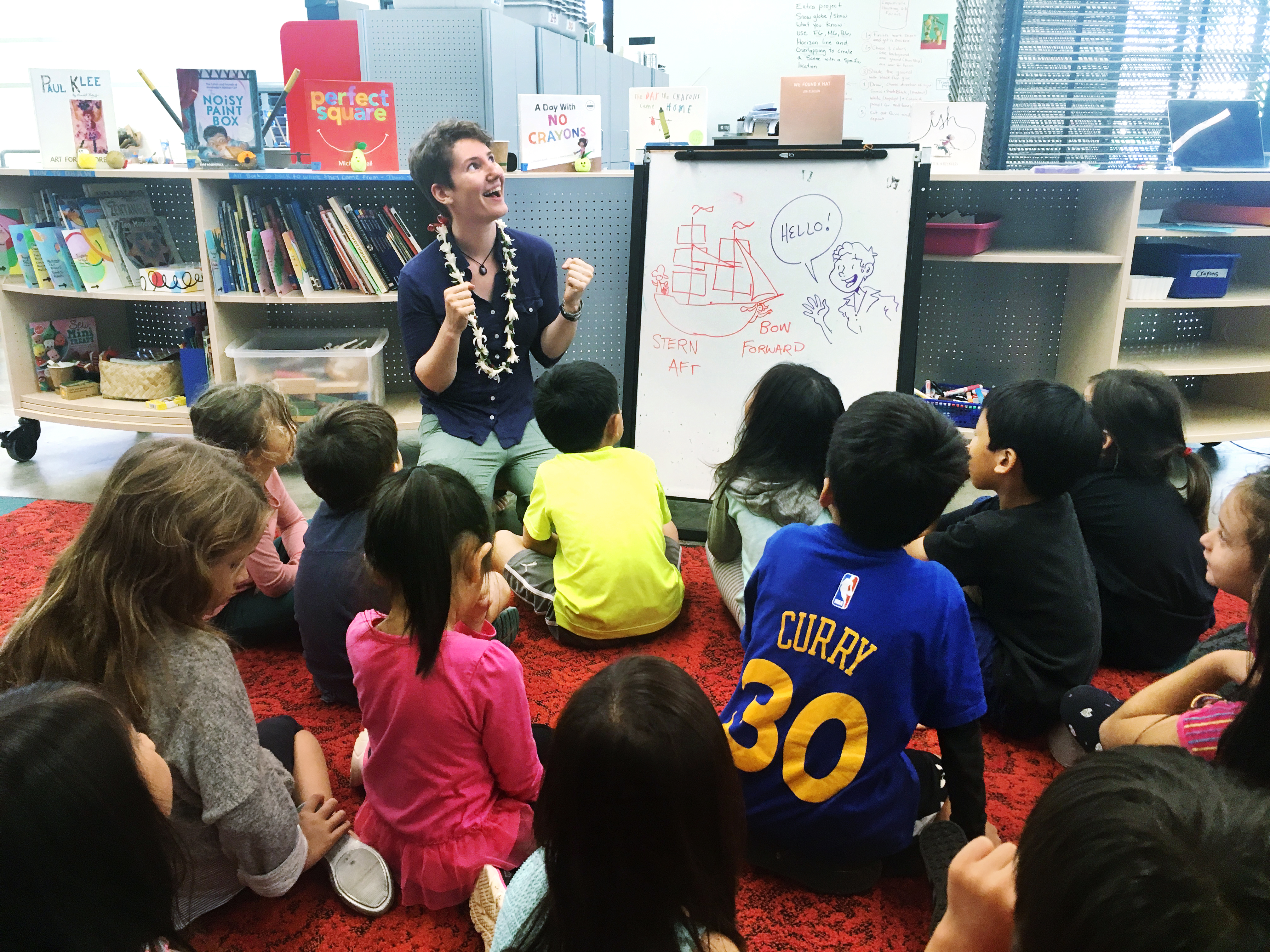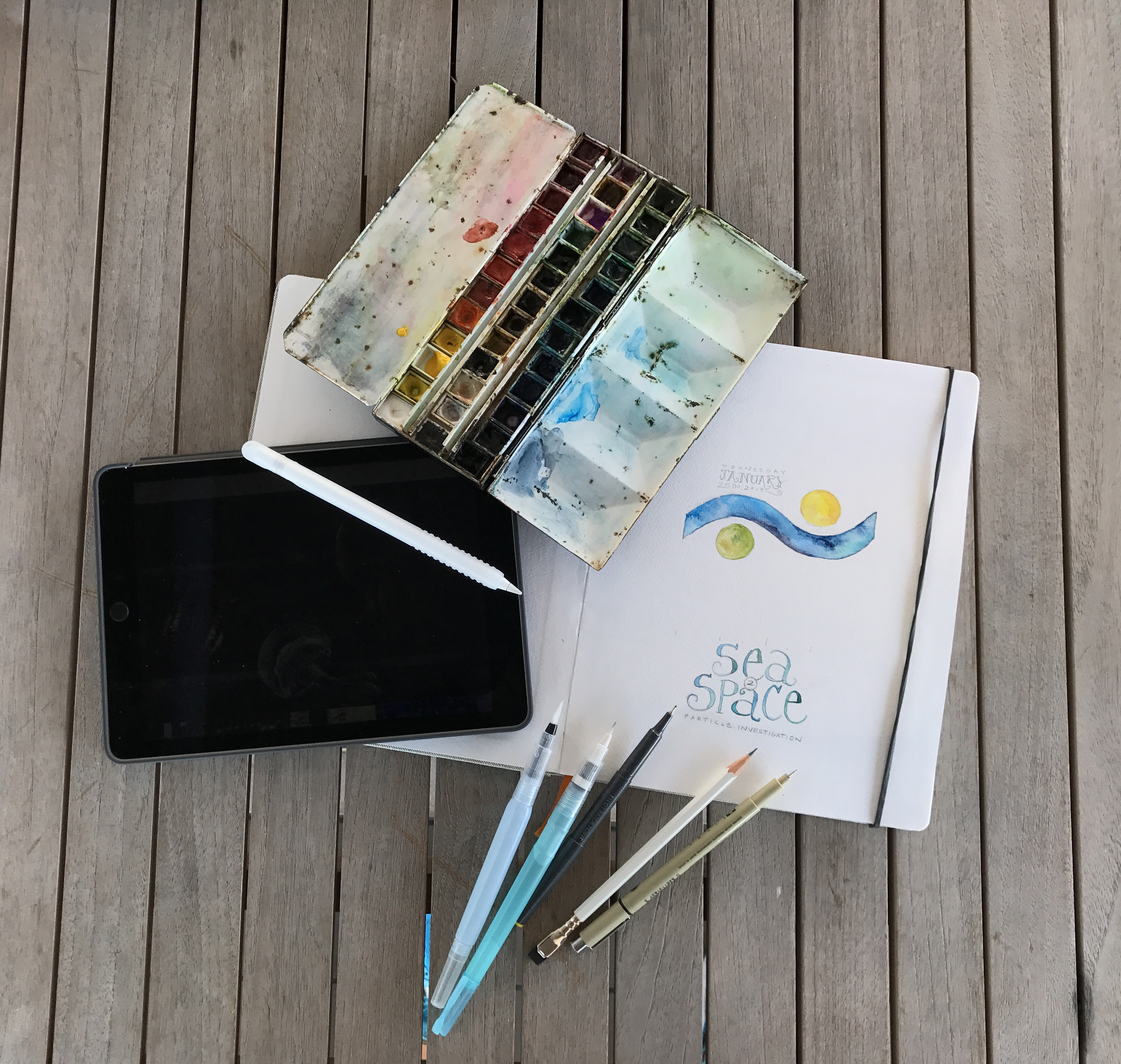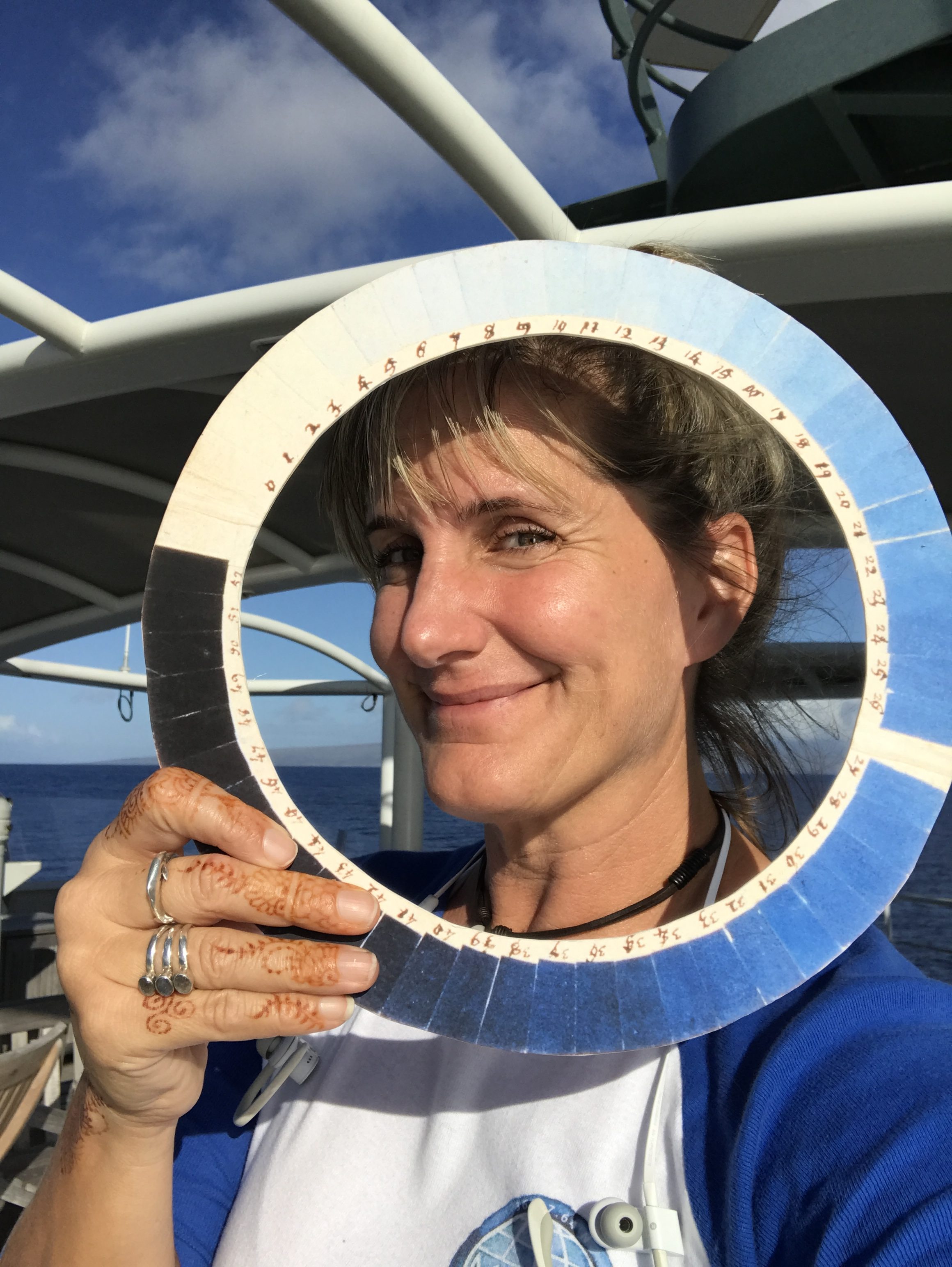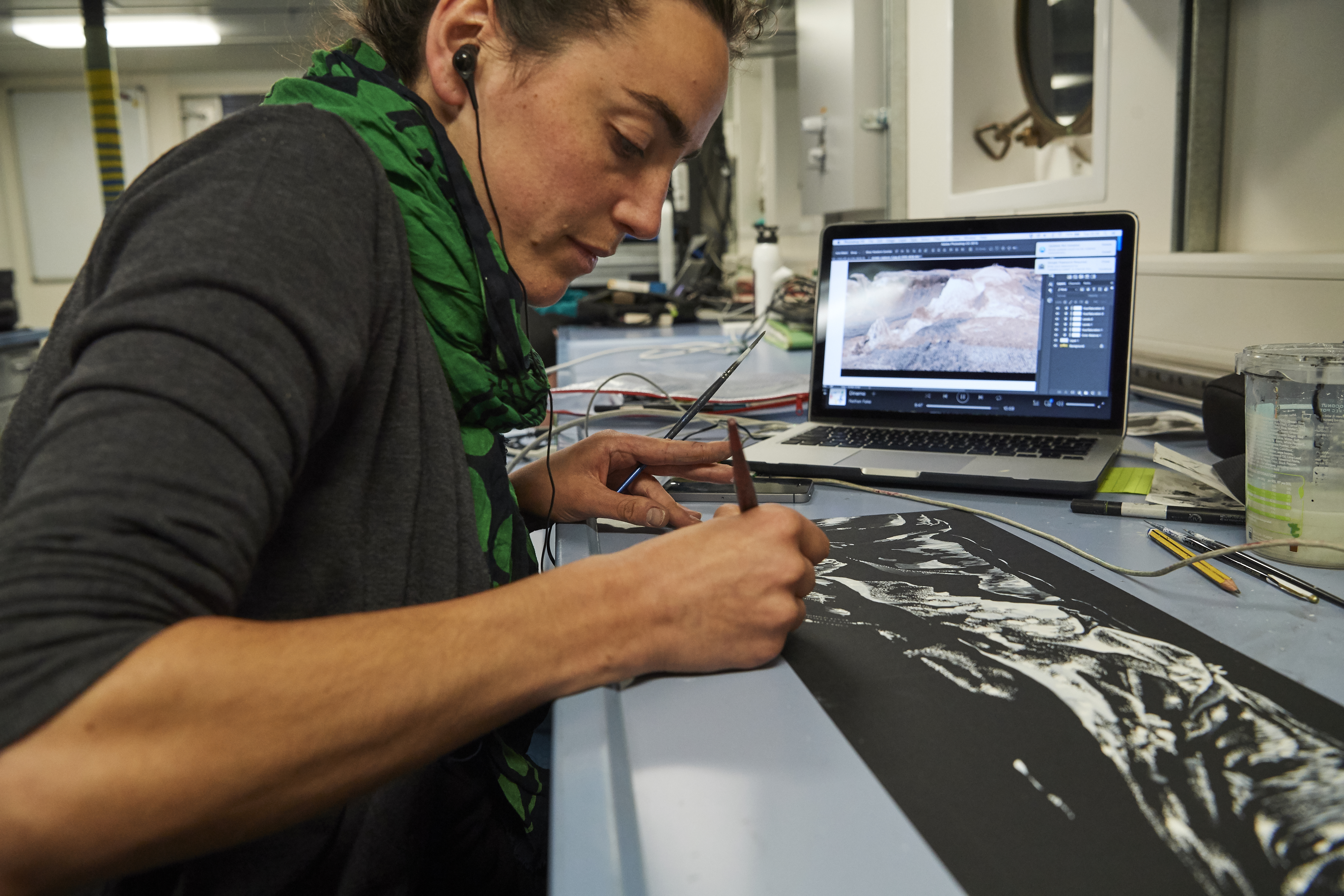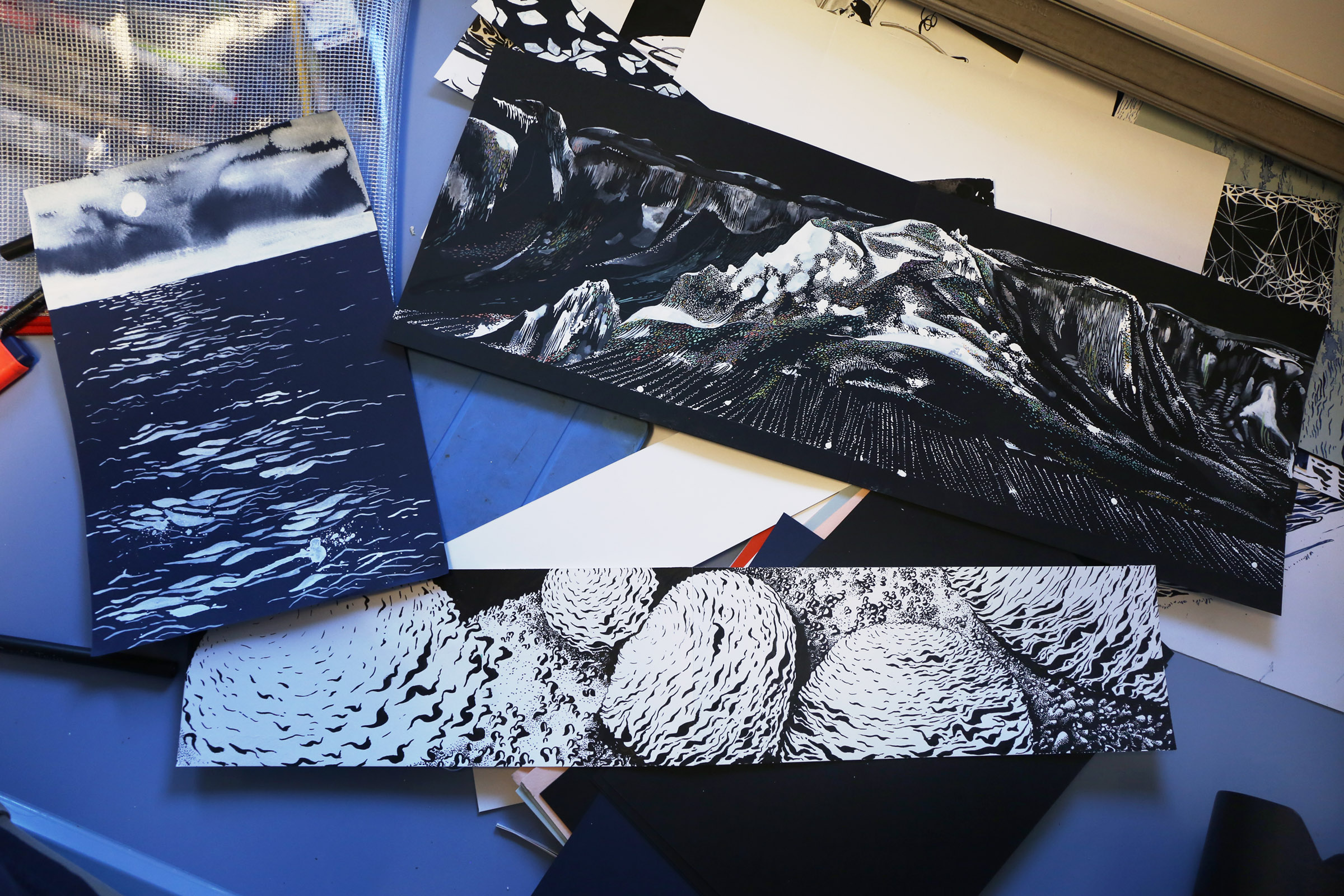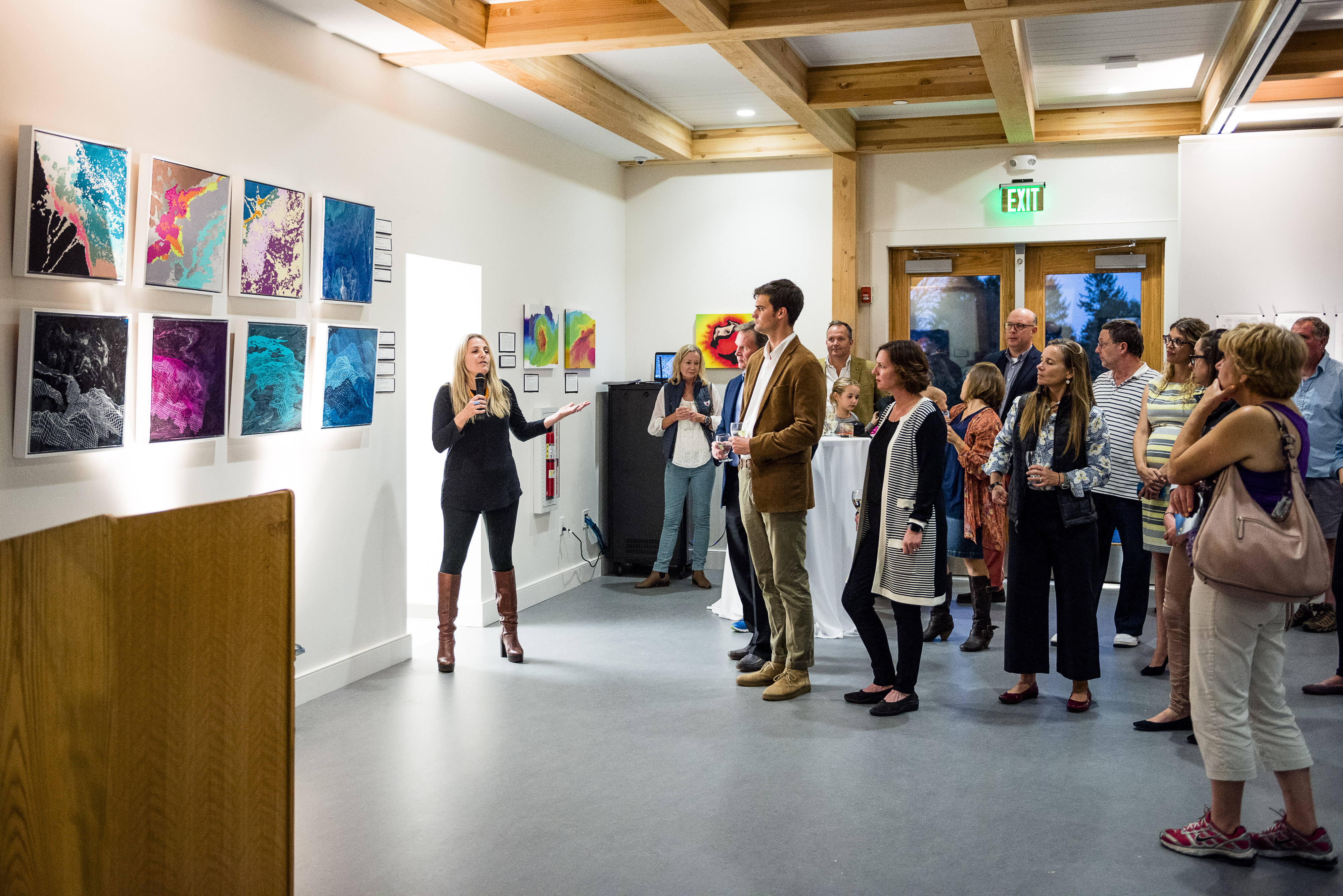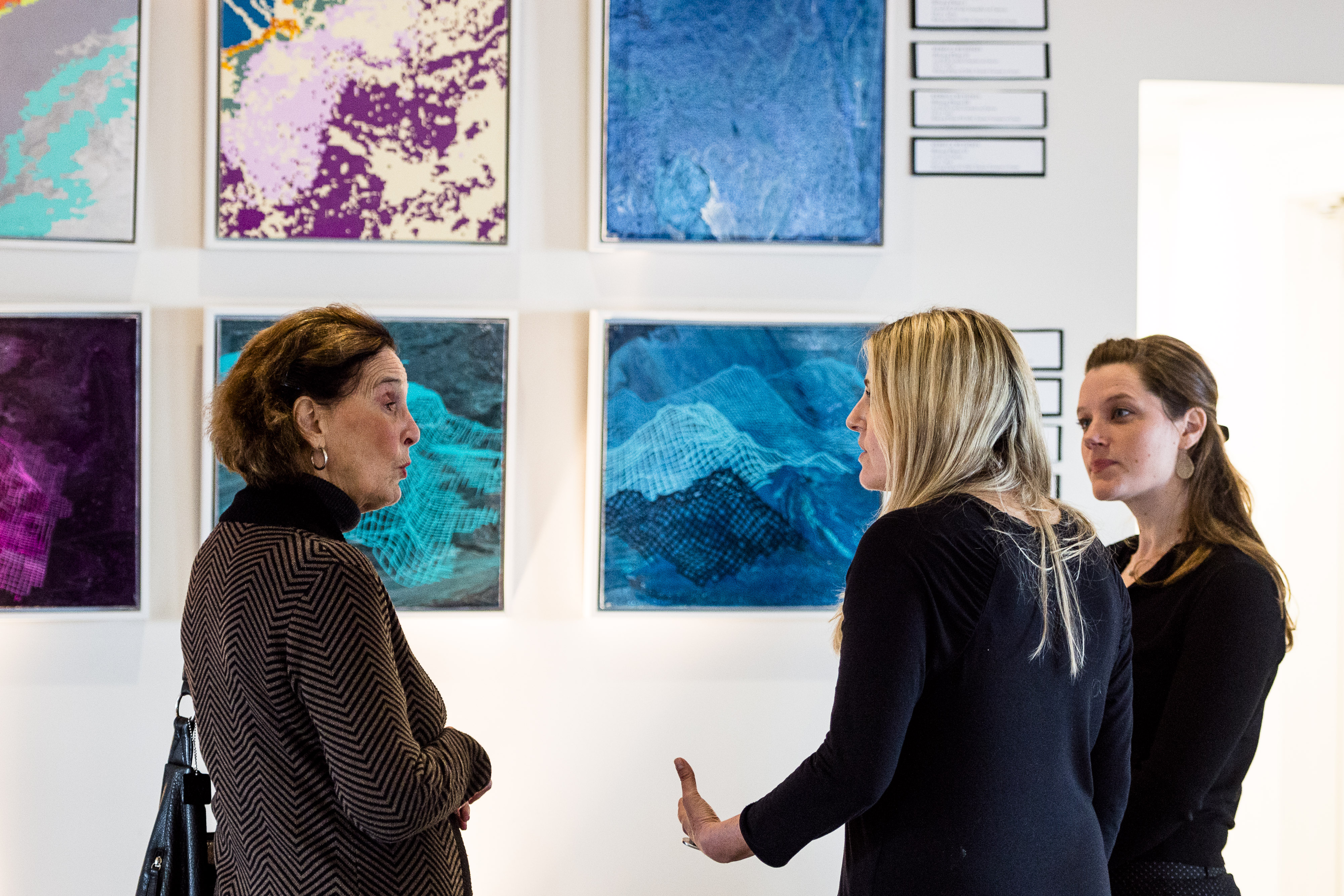SOI’s Artist-at-Sea program flourished in 2017, adding several artists to the list of those who have sailed aboard Falkor since the program’s inception. 2017 gave rise to the launch of a unique traveling exhibit featuring the works of the artists who have spent time at sea aboard Falkor. The artists’ participation on science expeditions resulted in pieces that illuminate the research taking place, engaging conversation and imagination among scientists, artists, and the greater community.
The Artist-at-Sea exhibit now features over 50 pieces inspired by science and research carried out aboard Falkor, with work from over a dozen different artists. The new traveling exhibit was showcased at special venues including America’s Cup in Bermuda, and in the United States at the International Ocean Film Festival in San Francisco, the Bishop Museum and the Arts at Marks Garage in Honolulu, Monterey Bay Aquarium Research Institute in Monterey, the NOAA Ocean Exploration Forum in San Diego, and the newly built Sail Newport facility in Rhode Island. Several gallery opening events were held with remarks from the artists and Schmidt Ocean Institute co-founder Wendy Schmidt. Over 4,000 people attended these events, engaging in inspiring conversations about both the works themselves, as well as the science and technology they represent. The exhibit will conclude in the U.S. with a showing at the 2018 Ocean Sciences meeting in Portland, Oregon and a two-month display at the Aquarium of the Pacific in Long Beach, California.
Getting kids and adults engaged in the science that is happening every day around the world is no small task. There are layers and layers of technical jargon to sift through, plus the necessity of contextualizing raw data in the grander scheme…The picture is too big to comprehend alone: we have to cooperate
— Lucy Bellwood
Lucy Bellwood, a professional adventure cartoonist, was immersed in the world of seafloor mapping. Lucy crafted a Falkor-based comic book providing a layman’s explanation of how multibeam mapping works and what the team discovered while mapping the Johnston Atoll. The resulting graphic story has become a powerful tool for public outreach, with more than 1,000 copies printed and distributed to students.
I hope that my passion for understanding nature through the lens of both science and art will give our audience the chance to connect with ocean science and new technology in new and imaginative ways. Art is an important tool that helps us see how interconnected the health of humanity is to the oceans and life on this planet
— Kirsten Carlson
Kirsten Carlson worked alongside scientists as they used cutting edge tools focused on understanding and measuring the color of the ocean. Kirsten found a natural, artistic complement to the advanced HyperSAS Radiometer by creating her own cyanometer. She also examined photos of surface water plankton from the state-of-the-art Imaging Flow Cytobot technology. “The diversity of shapes and sizes in phytoplankton is overwhelming…Seeing them firsthand made me realize how interrelated all things are.” The captivating beauty she describes is presented in detail on the phytoplankton poster she created with ink and watercolor paints while on Falkor.
I hope my artwork will be received in a way that enables a wider understanding of this research for persons without a specific background knowledge of oceanography. At the same time, I would like to make something that provides a fresh perspective to those involved in the research
— Natasha Russell
Artist and illustrator Natasha Russell joined the “Sea Level Secrets” expedition and immersed herself in a range of activities gaining inspiration from ancient drowned reefs. She combined the use of computer-generated imagery, images of physical samples, the surrounding environment, and data interpretations to create abstract, yet representative drawings that can be combined together into largescale screen prints. The work reflects the way that different types of research results are layered together and interpreted as one larger picture. “The intention was to make artwork that can reveal the scientific process used in this research.” This includes helping audiences to get a sense how the process moves from a wide, overall macroscopic view to a very detailed and precise scale, as well as introducing the massive processing of data that is needed to shift the understanding from not simply “What is there?” but the more complex “Why is it happening?”

